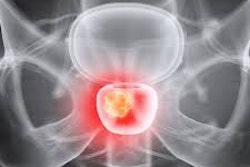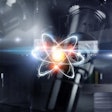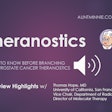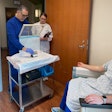BOSTON - A study from Massachusetts General Hospital (MGH) concluded that proton therapy decreases the risk of cancer patients developing a second malignancy by 50%, compared to treatment with standard photon radiation.
According to the study, 6.4% of patients who underwent proton therapy developed a secondary cancer, compared to 12.8% of patients who had photon treatment. The findings were detailed on Monday at the annual meeting of the American Society for Therapeutic Radiology and Oncology (ASTRO) in Boston.
The study contradicts recent theories suggesting that proton radiation might increase the incidence of secondary cancers because of scatter radiation. When proton radiation is delivered, neutrons are produced by nuclear interactions and scattered as a result.
SEER comparison
The retrospective cohort study matched 503 patients who underwent proton radiation treatment at the now closed Harvard Cyclotron with 1,591 patients treated with photon radiation therapy from the Surveillance, Epidemiology, and End Results (SEER) cancer registry from 1974 to 2001.
Patients in the analysis included those with brain tumors, prostate cancer, sarcoma, and tumors at the base of the skull. Researchers excluded eye cancer patients because there were only 285 patients in that category. "The field size was so small that it might bias the results," said radiation oncologist Dr. Nancy Tarbell, study senior author and director of the Partners Office for Women's Careers at MGH.
Photon radiation is the standard external-beam radiation therapy treatment, while proton radiation is a more targeted form of external-beam radiation and is designed to deliver less radiation to nearby healthy structures. During external-beam radiation therapy, a beam of radiation is directed through the skin to the cancer and the immediate surrounding area to destroy the main tumor and any nearby cancer cells.
Pediatric treatment
Tarbell said the study results are particularly relevant for young cancer patients who potentially could be exposed to more radiation treatments.
"If you are much older, your time period for risk of a second malignancy becomes less relevant," she said. "We are very interested in the pediatric cohort because, if this finding is true in adults, it has to be even more important for young patients where second malignant tumors are such a big issue. We are starting to treat children with protons, but we will have to follow them for a longer time."
Researchers are still reviewing data to determine if the second tumors are in the same areas -- such as the brain, head and neck, and prostate -- as the initial tumors and to evaluate in which groups of patients proton therapy has the greatest and least effect. "Most of the tumors appear to occur in the area near the radiation beam," said Dr. Thomas Delaney, director of the MGH Francis H. Burr Proton Therapy Center. "There is some question about tumors at a greater distance" from the primary tumor field.
Clinical benefits
As for the study's clinical benefits, Tarbell opined that the findings give more credence to the use of proton therapy. "Usually when you do clinical trials funded by the government, you can't use second cancer as a measure because it takes too long [to appear]," she added. "The government, rightly so, is not going to fund a study that has a 20-year duration. There is no question, if we can show this and the immediate follow-up with this cohort was around six years, that we have an obligation to keep following our patients and know the second cancer risk."
The study has a cohort of pediatric patients who now have been treated on specific protocols, and going forward, MGH researchers will be able to compare those pediatric patients with similar patients treated nationally on similar protocols who receive x-rays. "You need long follow-up to do these studies," Delaney added. "Second malignancies are late events."
"The reason we are so interested in pediatrics is because if you are not giving radiation to developing normal tissues, side effects should be much less," he said.
By Wayne Forrest
AuntMinnie.com staff writer
September 23, 2008
Related Reading
Michigan healthcare systems form proton beam partnership, June 3, 2008
Cell survival offers IMRT insight on 'bystander effect,' November 23, 2007
Copyright © 2008 AuntMinnie.com



















